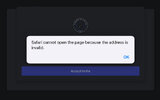Mr_Flintstone
Member
I've been using GRT for quite some time, and I've always had good luck with getting pressures close to what is printed in manuals when testing known loads. Once I've got my numbers working with verified loads, I then proceed to testing unpublished data. Now to my problem.
I wanted to experiment with my .32 H&R magnum, so I did the same things I always do in testing data from manuals to see how they compare to computer predictions of velocity and pressure. A problem is that GRT measures in PSI, and nearly all 32 H&R data is in CUP. To overcome that, I just used max loads that were very close to 21,000 CUP to see what their predictions were in PSI. The first powder I tried was Titegroup which was listed with an 85 grain XTP as having a pressure of 20,900 CUP, so I thought that should be in excess of 21,000 PSI, and it was 21,025 psi. That looked OK, so then I start testing other powders, and this is where things go sideways. The one I tested next was 231. It showed a published pressure of 20,800 CUP, so I thought it should give something close to Titegroup, but it didn't. It gave 16,700 PSI. Everything checked out OK, but a really low pressure, so on to the next. I tested max loads of Autocomp, HS-6, Bullseye, and Unique, and they all gave pressures between 13,000-17,000 PSI when published data showed pressures over 20,000 CUP. The only other powder that came anywhere close to published data was Universal, but it was somewhat low too. I thought this was really strange because my loads for .32 S&W Long are usually pretty close to published data. At this point I don't feel confident in using GRT to make predictions with 32 H&R Magnum.
Has anyone else had any problems with this or any other particular load in GRT?
I wanted to experiment with my .32 H&R magnum, so I did the same things I always do in testing data from manuals to see how they compare to computer predictions of velocity and pressure. A problem is that GRT measures in PSI, and nearly all 32 H&R data is in CUP. To overcome that, I just used max loads that were very close to 21,000 CUP to see what their predictions were in PSI. The first powder I tried was Titegroup which was listed with an 85 grain XTP as having a pressure of 20,900 CUP, so I thought that should be in excess of 21,000 PSI, and it was 21,025 psi. That looked OK, so then I start testing other powders, and this is where things go sideways. The one I tested next was 231. It showed a published pressure of 20,800 CUP, so I thought it should give something close to Titegroup, but it didn't. It gave 16,700 PSI. Everything checked out OK, but a really low pressure, so on to the next. I tested max loads of Autocomp, HS-6, Bullseye, and Unique, and they all gave pressures between 13,000-17,000 PSI when published data showed pressures over 20,000 CUP. The only other powder that came anywhere close to published data was Universal, but it was somewhat low too. I thought this was really strange because my loads for .32 S&W Long are usually pretty close to published data. At this point I don't feel confident in using GRT to make predictions with 32 H&R Magnum.
Has anyone else had any problems with this or any other particular load in GRT?



